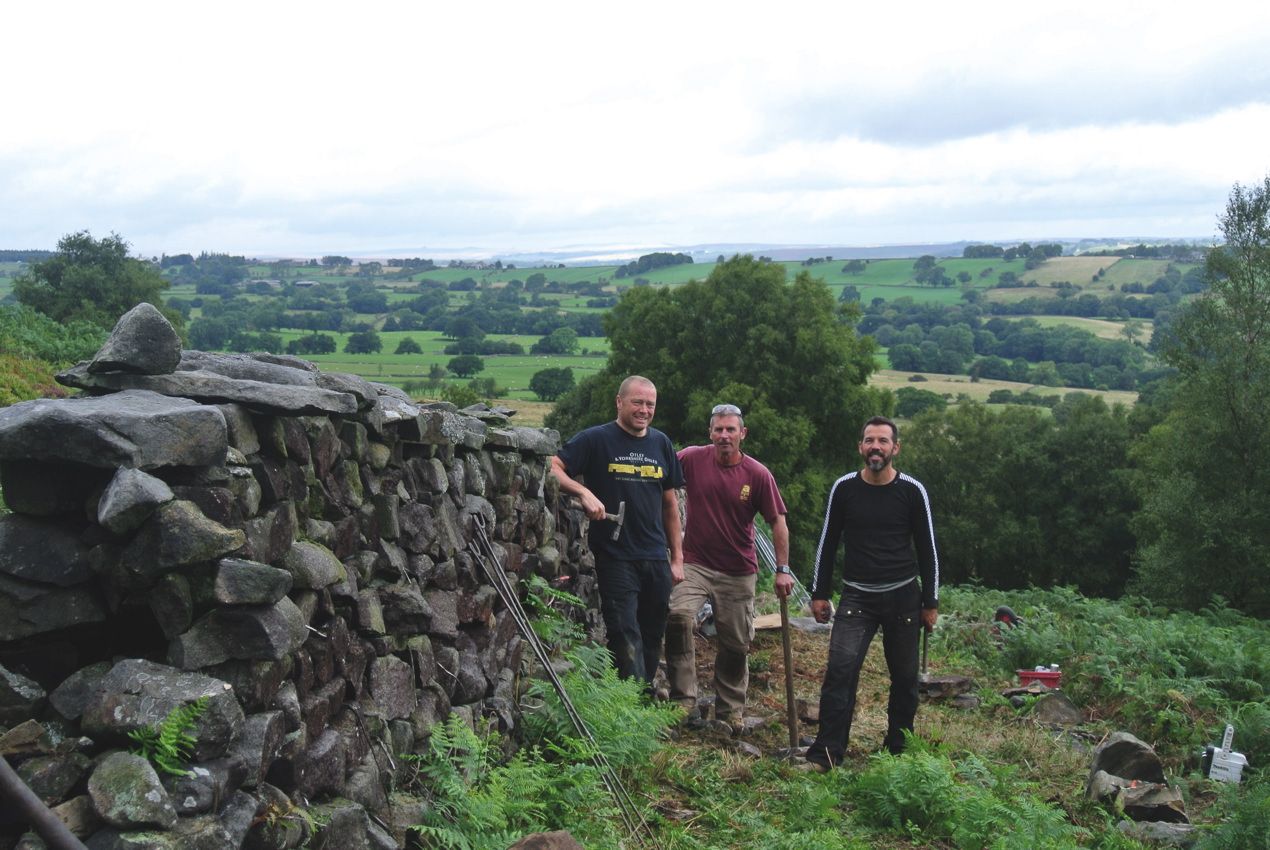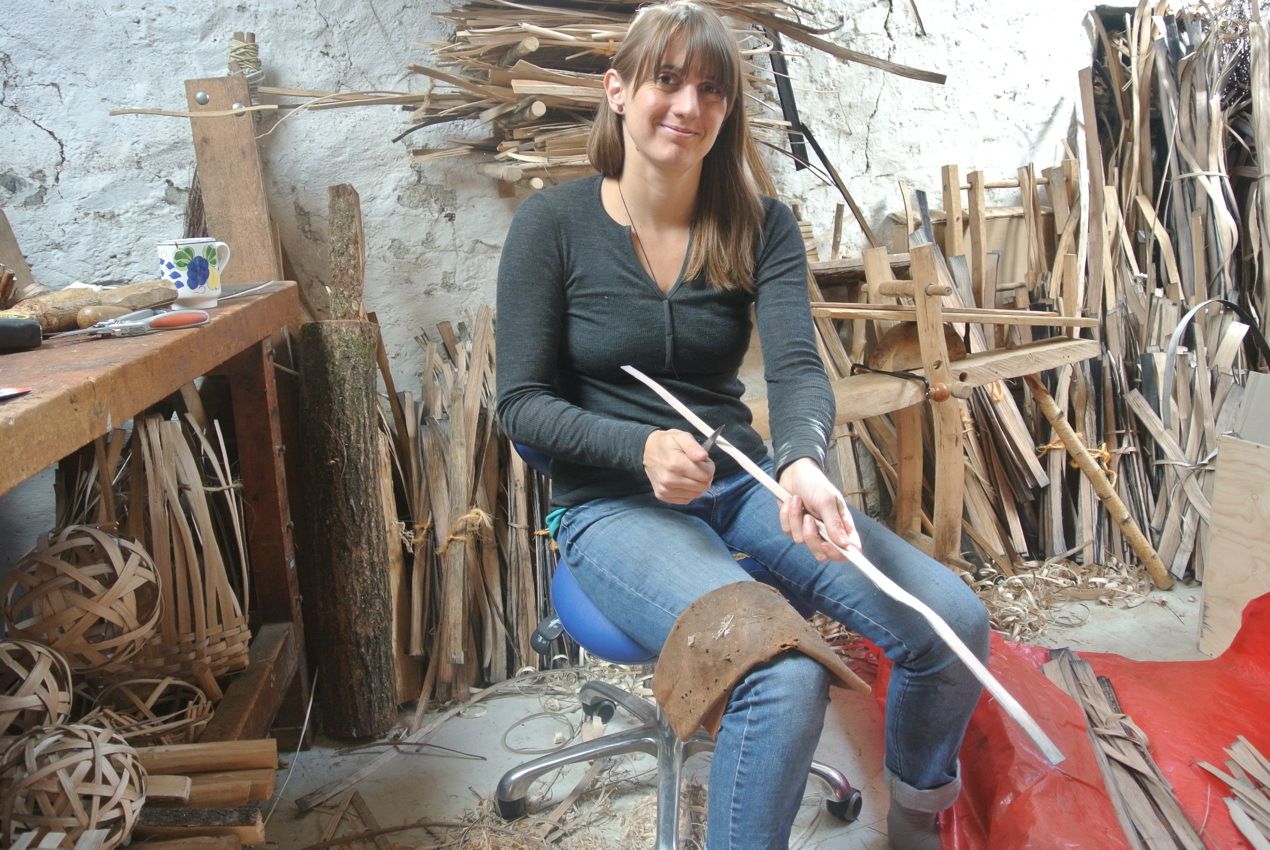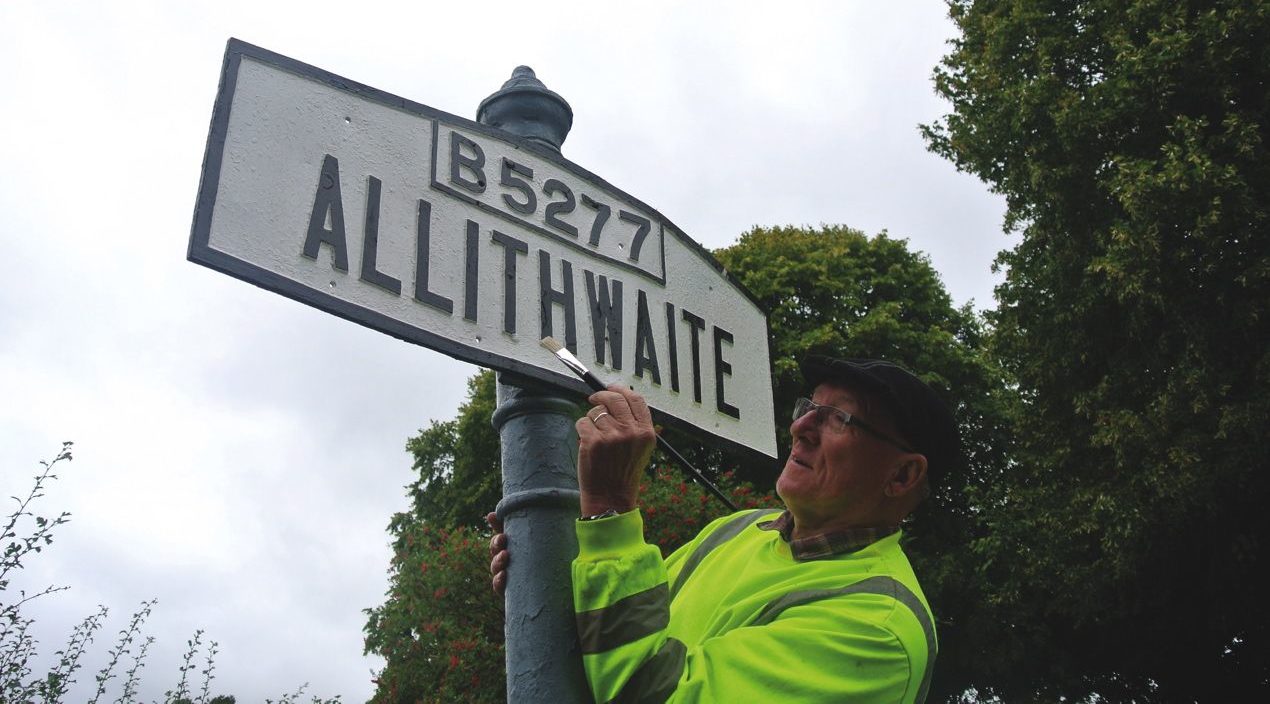Old habits die hard
In a consumer culture where we’re quick to dispose of goods and most of what sustains us comes from sources unknown, crafts dating back to medieval times are making a comeback
“It helps if you are tall, with long arms,” laughs Archie Workman as he works his paintbrush to breathe new life into a roadside relic. The 60-something has scaled his ladder today to lovingly tend to a cast-iron signpost that announces arrival at Allithwaite, south Cumbria.
“On crisp winter days when there’s a magical light to the landscape. It’s better than working in an office.”
Village signs like this one – which dates to 1840 – were common to the landscape of B-road Britain for more than a century. But many were removed during anti-invasion preparations for the Second World War, to confuse the enemy. In the 1960s they came under further attack by highways chiefs keen to replace them with lightweight modern models.
Workman is on a mission to restore and rejuvenate the few iron antiques that do survive.
“I get quite passionate about road signs and for them to be nice and clean. It’s a village pride thing. Parish councils want their particular patch to look neat and tidy. A road sign can be the first impression visitors get of a particular place.”
Workman is a freelance lengthsman – a medieval term for someone who looks after a length of road, canal or railway. He offers rural repairs on a small scale.
County councils got rid of lengthsmen in the 1960s but several parishes in south Cumbria have recently re-introduced them. Now five parish councils are utilising Workman’s services.
“There is craft involved as well as skill and patience. Though I hate painting in-between letters like W and N. That can be really tricky.”
Within eight hours Workman’s Allithwaite sign will return to its Victorian finery, resplendent in black and white. “I think signposts like this should be listed. I love their nostalgia. When I restore a road sign people sometimes stop and get a selfie with it.”
Workman is one of an ever-shrinking number of traditional craftspeople providing olde worlde work in modern times. Over in the Yorkshire Dales John Hulbert is halfway up a steep embankment dry stone walling. An ex-scientist, he got sick of “meetings for meetings sake” and swapped nine-to-five for hands-on, outdoor work.
“I guess it was a mid-life crisis,” the 52-year-old says. “I was in my 40s and wanted a job that involved being outdoors. Something that would give me job satisfaction and better work-life balance.”
Hulbert received training opportunities through TVC, a Conservation Volunteers Charity, and quickly took to dry stone walling and hedge laying. That was
13 years and miles of walls ago.
Hulbert and colleagues Neil Beasley and John Downie busily repair and extend a wall which seems to stretch into eternity. A digger can only carry stones
so high, the rest have had to be carried up the hill by hand.
“You have to be physically fit to do the job. We can work in all weathers but you can’t rush a job like this. I like the cold crisp winter days when there’s a magical light to the landscape. It’s certainly better than working in an office.”
There is a great demand for dry stone walls and Hulbert believes it’s largely thanks to gardening programmes on TV, in which designers have recently gone wild for walls.
“People are going back to old values in today’s modern world,” he says. “No-one wants decking anymore. People look at the landscape of Yorkshire and want dry stone walls in their gardens. It’s a desire for simpler things.”
The craft of walling stretches back at least three and a half millennia, to the village of Skara Brae in the Orkneys, and the Iron Age brochs of northern and western Scotland. Dry stone walls, named because as they are built without any mortar or cement, are the backbone of rural Britain.
“I lost 10lbs in my first two months as a dry stone waller,” says John Downie, 56. “It can be hard work but leaving our mark on the landscape gives us a sense of pride. The walls are there for generations to see and admire. They will outlive us.”
The three men battle bracken and midges as they work the wall and landowner Bill Taylor is impressed with their efforts.
“It would have been easy and much cheaper for me to get some wooden posts and wire but I wanted to go with tradition,” he says. “I don’t want old trades to die out. I guess I’m putting my money where my mouth is. I feel as though I’m a custodian of the environment here and it’s important to
do things the right way.”
In May the Dry Stone Walling Association celebrated its 50th birthday with a competition in Kirkby Lonsdale. A farmer allowed his wall to be knocked down and then rebuilt by 50 of the very best stone supremos. Two competitors even jetted in from Japan. It was big news in Stone Specialist Magazine.

Over in Burneside, near Kendal, a swiller – specialising in woven wooden products – preps long strips of oak which will eventually be added to a designer bench.
Lorna Singleton cuts and prepares wood by hand, managing and restoring coppice woodland in a responsible and renewable way, seeing the whole process from tree to finished product.
“It may seem like a niche industry, but anything can be made out of wood. I enjoy honouring the generations of swillers before me by creating baskets in the traditional patterns,” says Singleton. “However, the oak swill and the techniques used to handle it are incredible and deserve celebration, so I also endeavour to design and make contemporary products that show off the unique strength and flexibility of swill.”
Singleton’s baskets have a rich heritage. They are based on the traditional baskets from the Furness area of south Cumbria (old Lancashire). Their production cannot be mechanised and so are made using the simple hand tools and techniques used by generations of swillers.
“I made my first swill in 2010 and was hooked. Since then I’ve put my heart and soul into making the baskets. It’s almost like my emotions are expressed in them.
“I get quite attached to a basket as I make it. And it’s difficult to sell them and let go. It’s like a pet that you want to go to a good home. I feel like I almost have to vet buyers before they walk away with my basket.”

So how important are traditional crafts now most of our working days revolve around laptops and smartphones?
“Traditional crafts are part of our DNA, just look at the many craft surnames there are: Barker, Potter, Turner, Weaver, Wright and, of course, Smith,” points out Patricia Lovett, chair of the Heritage Crafts Association. “Craft skills connect us with our past and often provide a sense of place. However, more than this perhaps, is that research shows how important craft skills are to our wellbeing, being an antidote to a hectic career, as well as improving hand-eye co-ordination, problem solving, dealing with failure, finding solutions and so much more.”
Crafts are well-documented stress relievers. Britain’s most successful Winter Olympian, Lizzy Yarnold, famously knitted between skeleton races to keep her calm – a craft she had been taught by her granny.
“The lack of craft skills taught in schools is worrying,” says Lovett, pointing out that trainee surgeons have to be taught sewing, thread management and observation. “It is important to teach craft skills, not simply to retain them but also ensure that they are passed on to future generations.”
Are traditional crafts making a comeback?
“There does seem to be a rise in some textile crafts such as sewing, quilting, dressmaking, embroidery and knitting. And in certain wood crafts such as spoon carving,” says Lovett. “However, it is very difficult for people to find entry routes to learning craft as so many courses at higher and further education have closed – there are now no full-time book binding courses in the UK and the 300+ ceramics courses have been reduced to six, all of which are joint degrees. In addition there is little funding for people to learn the skills so learners have to self-fund, which is not possible for most of those who want to learn on full-time courses.”
Singleton’s studio is in a former mill. She’s surrounded by carvings, tools of her trade and an array of wooden masterpieces.
There’s a quote on the wall which seems to sum up the ethos of traditional tradesfolk like herself as well as lengthsman Archie Workman and dry stone waller John Hulbert.
“In a society where most of what we have and sustains us from day to day comes from sources unknown, making a useful, beautiful object from a tree with simple hand tools is an inspiring act”.
Main image: Archie Workman is a lengthsman – a medieval term for someone who looks after a length of road
